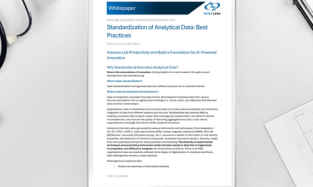European molecular spectroscopy market to value $2.83bn by 2027
Posted: 11 May 2021 | Hannah Balfour (European Pharmaceutical Review) | No comments yet
Research suggests the development of new instruments and growing government investments, particularly in Germany, will drive growth of the European molecular spectroscopy market.


According to a market research report, the European molecular spectroscopy market is expected to reach $2.83 billion by 2027, growing at a rate of 6.6 percent in the forecast period (2020 to 2027), driven by factors such as the rising adoption of these techniques in pharma and biotech research and the development of new instruments.
Molecular spectroscopy is a phenomenon where electromagnetic radiation interacts with materials, producing a spectrum with which scientists can deduce compositional or structural information. This technique is often used to identify and quantify relevant information about the atoms and molecules in a drug formulation, as they consist of unique spectra. They are also used for remote sensing applications.
There are a huge variety of different molecular spectroscopy technologies, but the key categories include nuclear magnetic resonance (NMR) spectroscopy, ultraviolet (UV)-visible spectroscopy, infrared (IR) spectroscopy, near-infrared (NIR) spectroscopy, colour measurement spectroscopy and Raman spectroscopy. Each can be broken down further into more specific techniques, for instance, Raman spectroscopy can be segmented by sampling technique (eg, surface-enhanced Raman scattering [SERS] and tip-enhanced Raman scattering [TERS]) or type (eg, micro-Raman spectroscopy, probe-based Raman spectroscopy and FT-Raman spectroscopy).
Key applications within the European market include pharmaceutical functions, biotechnology and biopharmaceutical applications, food and beverage testing, environment testing and academic research, among others.
Controlling growth in the European molecular spectroscopy market
According to the market research report, the application of molecular spectroscopy in environmental screening, rising adoption of molecular spectroscopy in biotech and pharma research, growing food safety matter and further development of sophisticated instruments are all factors driving the growth of European market. Other potential growth promoters are the application of tetra hertz spectroscopy in healthcare applications technologies and growing government investments.
However, the high initial cost of spectroscopy instruments; lack of skilled personnel; low awareness; and stringent regulatory and industrial standards are all restraining growth.
Molecular spectroscopy by country
The research report comments on the molecular spectroscopy market in Germany, Italy, the UK, France, Spain, Netherlands, Belgium, Switzerland, Turkey, Russia and rest of Europe.
Overall, Germany is expected to dominate the molecular spectroscopy market in Europe, due to its advanced healthcare systems. Additionally, the report suggests technological advancements in molecular spectroscopy are supported by the German government through various incentives and investments, propelling the growth of the market in the country.
Key market players
The major players in the Europe molecular spectroscopy market include Thermo Fisher Scientific Inc., Merck KGaA, PerkinElmer Inc., ABB, Agilent Technologies Inc, Bruker, Horiba Ltd, Shimadzu Corporation JEOL Ltd and JASCO, among other domestic players.









